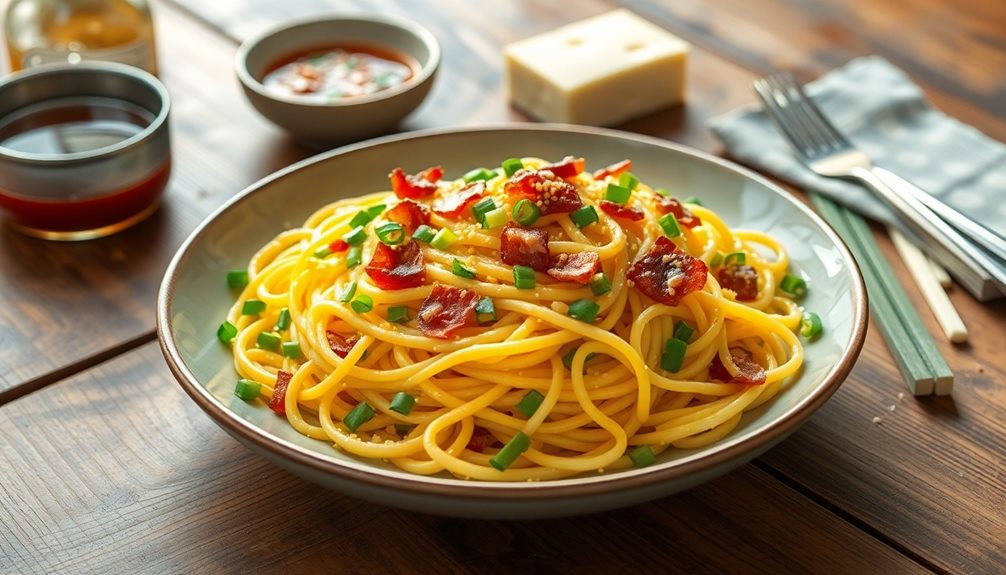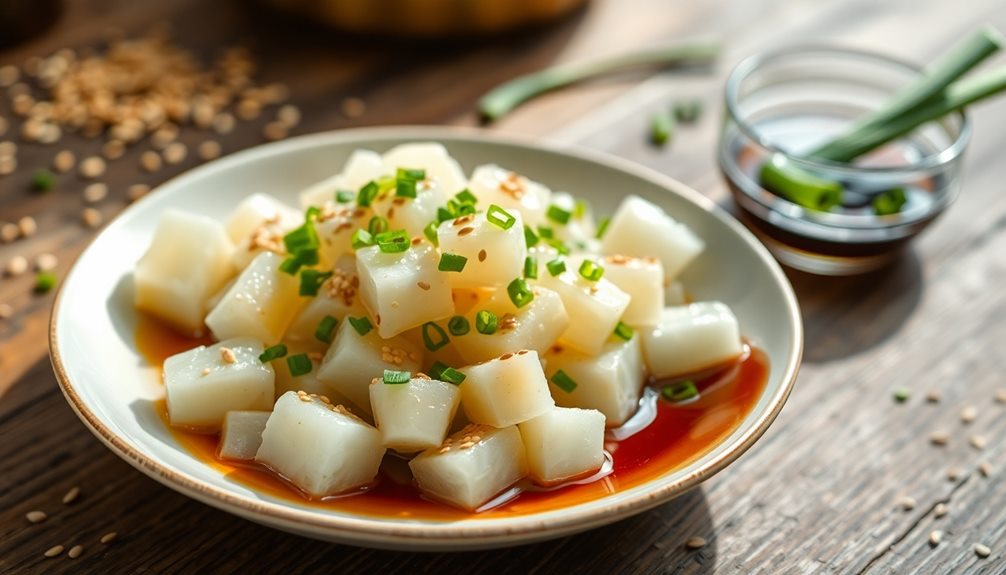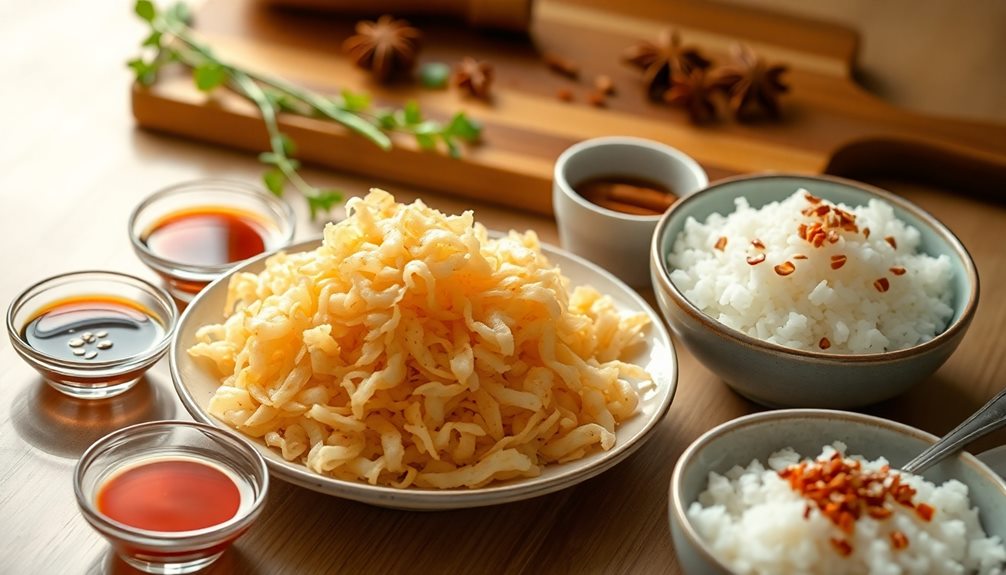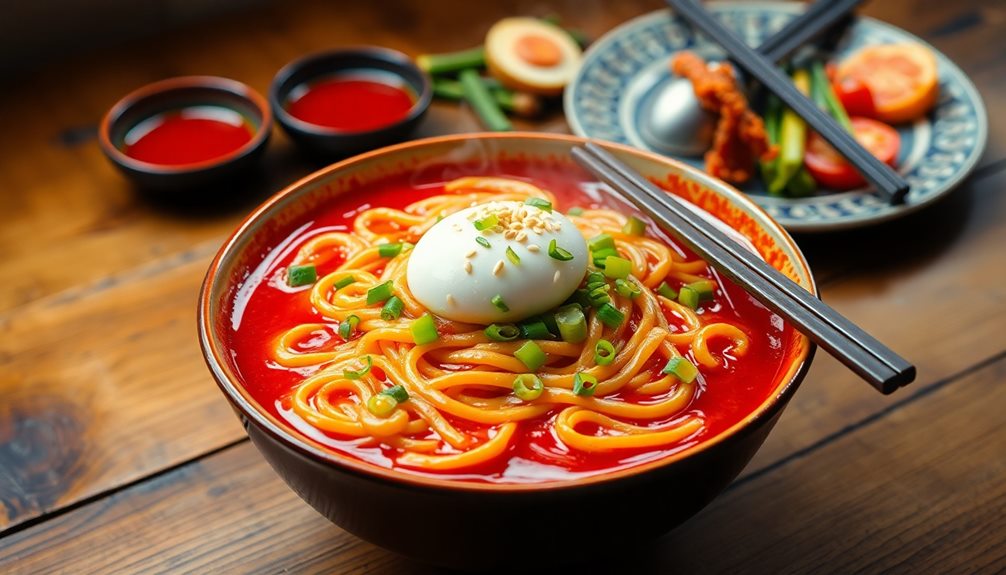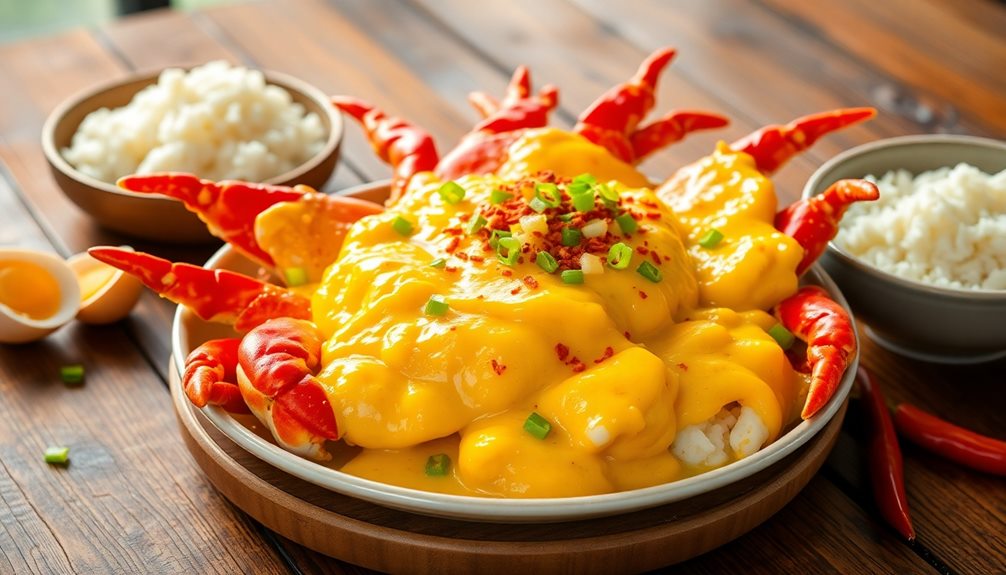Ah, the captivating pandan leaf – a fragrant jewel in the crown of Southeast Asian cuisine! For centuries, this versatile plant has enchanted palates with its unique aroma and flavor. To unleash its magic, you'll first want to gently rinse the leaves, removing any dirt or impurities. Then, chop them into bite-sized segments to maximize their infusion. Fold the vibrant green pandan into simmering rice, curries, or desserts, allowing its essence to bloom. As the dish cooks, the pandan's captivating scent will fill the air. Strain and serve, and prepare to be swept away by this remarkable ingredient's culinary prowess. There's so much more to explore with pandan…
Key Takeaways
- Pandan is a versatile leaf native to tropical Asia, integral to Southeast Asian cuisine for centuries due to its unique flavor and aroma.
- Pandan leaves are commonly used in various dishes, from savory curries to sweet desserts, to impart a captivating floral essence.
- Proper preparation, such as rinsing and chopping, is crucial for maximizing the infusion of pandan's essence during the cooking process.
- Pandan leaves are often simmered with other ingredients to allow the flavor to permeate the dish, resulting in a vibrant color and fragrance.
- The cultural significance of pandan extends beyond cuisine, as it has been used in traditional medicine and religious ceremonies in ancient times.
History
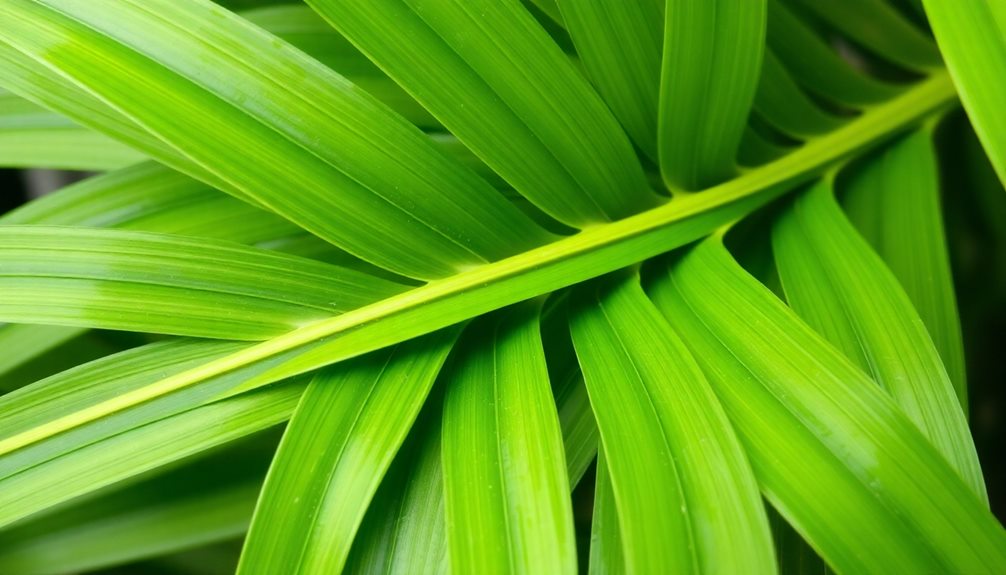
Pandan leaf, also known as "screw pine," has been an integral part of Southeast Asian cuisine for centuries. This fragrant, long-leafed plant is native to the tropical regions of Asia and has been cultivated for its culinary and cultural significance.
In many Southeast Asian countries, pandan leaves are revered for their ability to impart a unique, delicate flavor and aroma to a variety of dishes, from savory curries to sweet desserts.
The history of pandan leaf usage can be traced back to ancient times, when it was used in traditional medicine and religious ceremonies. Over the years, pandan has become deeply woven into the fabric of Southeast Asian culinary traditions, with each region developing its own unique ways of incorporating the leaf into their local cuisines.
From the pandan-infused sticky rice of Thailand to the pandan-flavored cakes of Indonesia, this versatile ingredient has become a beloved staple in the region's diverse culinary landscape. Its distinct aroma and vibrant green hue add a unique depth to both sweet and savory dishes, making it a favorite among chefs and home cooks alike. Beyond Southeast Asia, pandan has also made its way into fusion desserts, complementing treats like the sweet and chewy Korean rice cake with its fragrant, tropical notes. This cross-cultural appeal speaks to pandan’s adaptability and enduring popularity across different culinary traditions.
Cooking Steps

Once you have gathered all the necessary ingredients, begin by gently rinsing the pandan leaves under cool running water. This helps to remove any dirt or impurities.
Lay the leaves flat on a clean surface and pat them dry with a paper towel.
Next, use a sharp knife to trim the woody ends of the leaves. Be careful not to waste too much of the leaf.
Now, you can start cutting the leaves into small, thin strips. This will help the pandan flavor infuse more easily into your dish.
If you're using pandan in a rice dish, add the cut leaves directly to the pot of rice and water. The leaves will impart their distinctive aroma and flavor as the rice cooks.
For curries or other simmered dishes, simply toss the pandan strips in at the beginning, allowing the flavors to meld together.
Step 1. Rinse Pandan Leaves Thoroughly
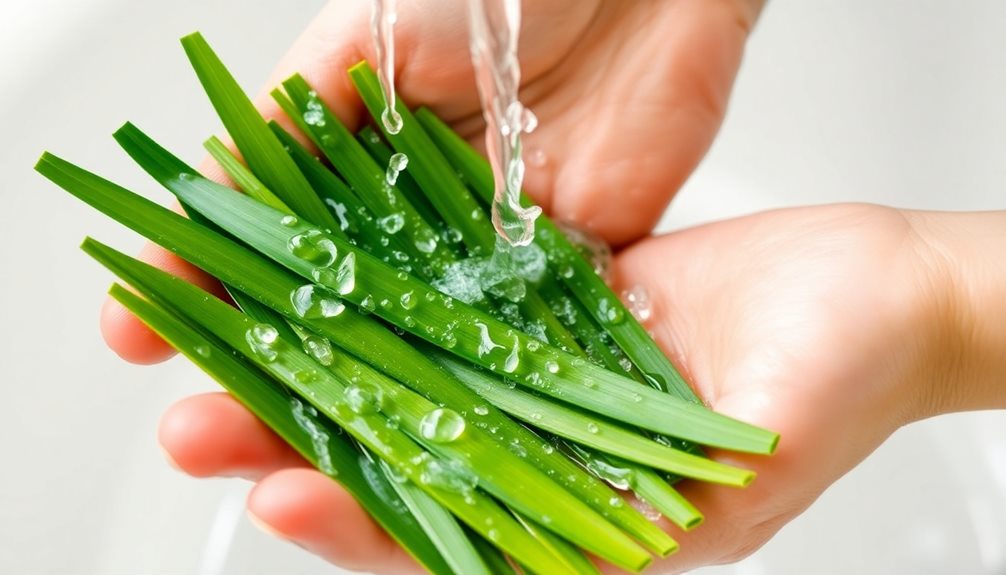
Before handling the delicate pandan leaves, it's essential to give them a thorough rinse. Start by running the leaves under cool, clean water.
Gently rub each leaf between your palms to remove any dirt, dust, or debris. Pay close attention to the creases and folds, as these areas can trap impurities.
Once the leaves are visibly clean, give them a final rinse to ensure all the unwanted particles are washed away. This step is crucial to preserve the bright green color and fresh, fragrant aroma of the pandan.
After rinsing, gently pat the leaves dry with a clean, soft cloth or paper towels. Be careful not to bruise or tear the delicate leaves during this process.
With the pandan leaves now clean and ready, you can proceed to the next step in your Southeast Asian culinary adventure.
Step 2. Chop Leaves Into 1-Inch Segments
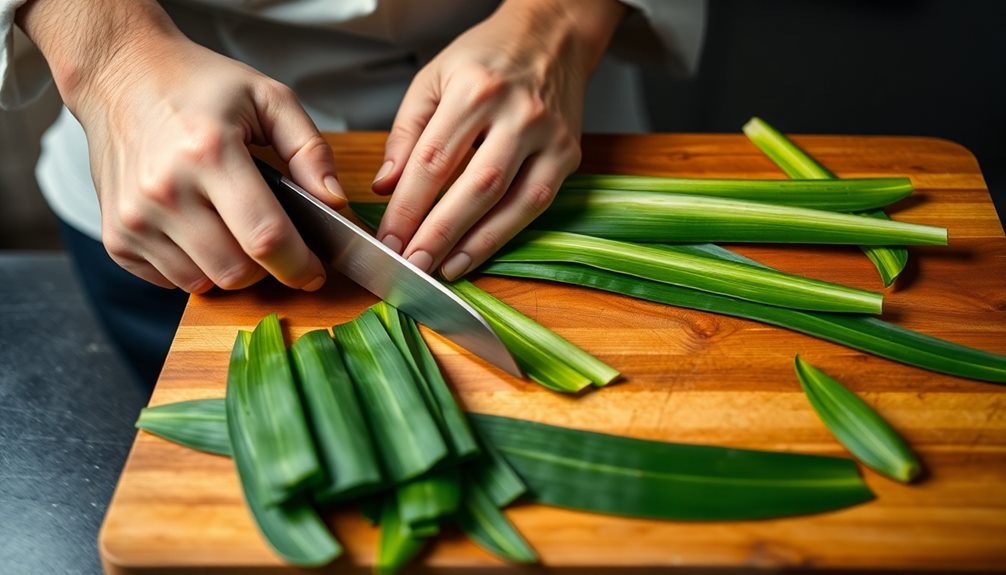
With your clean pandan leaves ready, take a sharp knife and chop them into 1-inch segments. This step is crucial for unlocking the leaves' full aroma and flavor. By cutting them into smaller pieces, you'll increase the surface area that can release their distinctive fragrance when cooked.
Be sure to use a sturdy, sharp knife for clean, even cuts. Slowly work your way down the leaves, slicing them into uniform 1-inch segments. This will help them cook evenly and infuse your dishes with that wonderful pandan essence.
After chopping, the pandan leaves are now ready to be added to your recipes. Their vibrant green color and captivating scent will transport you to the lush, tropical kitchens of Southeast Asia.
Get ready to elevate your cooking with the incredible flavor of this beloved ingredient!
Step 3. Add Leaves to Dish
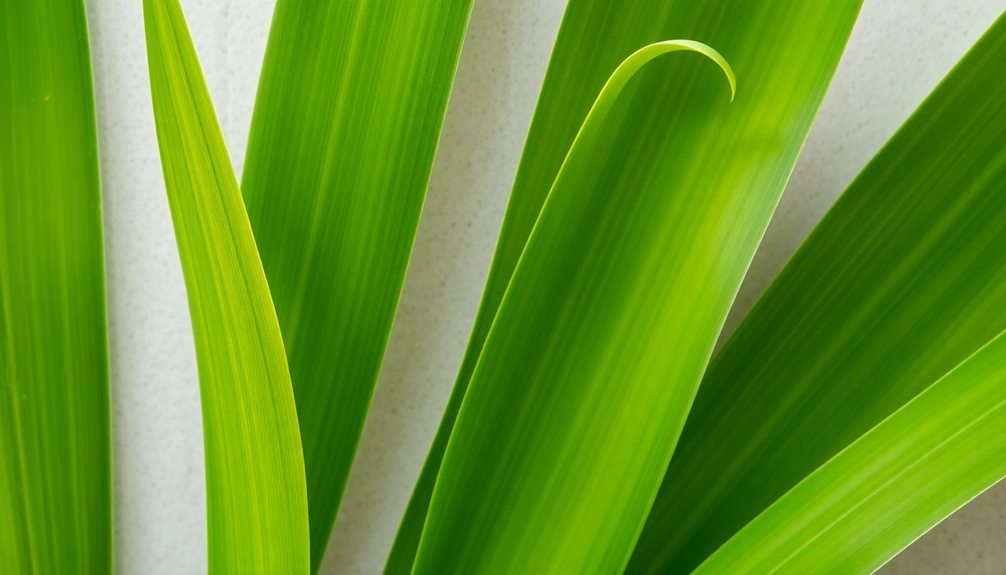
Now that you've chopped the pandan leaves into 1-inch segments, you're ready to incorporate them into your dish.
Grab a handful of the fragrant green leaves and gently fold them into your simmering pot of rice, curry, or stew. The pandan leaves will release their aroma, infusing the entire dish with their distinctive flavor.
Be sure to add the leaves towards the end of the cooking process, as they can become bitter if cooked for too long.
You'll know they're done when the leaves turn a vibrant shade of green and the scent becomes irresistible. Stir them in and let the dish simmer for just a few more minutes, allowing the pandan essence to permeate every bite.
Don't be shy – use as many pandan leaves as your dish can handle! The more you add, the stronger the flavor will be.
Adjust to suit your personal tastes, then get ready to enjoy the fresh, herbal notes that pandan leaves bring to Southeast Asian cuisine.
Step 4. Simmer Leaves With Other Ingredients
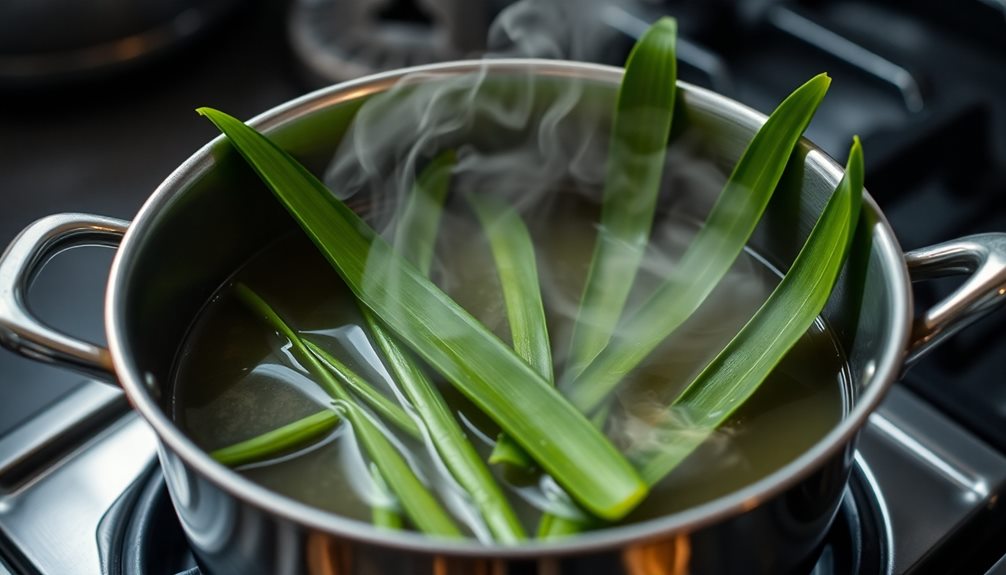
Once you've added the pandan leaves to your dish, let them simmer gently with the other ingredients. The leaves will slowly release their captivating aroma, infusing the entire dish with that signature Southeast Asian fragrance.
As the mixture simmers, the leaves will soften and become more pliable, allowing their flavors to fully integrate. Stir the pot occasionally to ensure even cooking. You'll know the leaves are ready when they've turned a vibrant green and the scent has permeated the air.
The longer you let them simmer, the more pronounced the pandan flavor will become. Be patient and let the leaves work their magic!
The results will be worth the wait – a delightfully fragrant and flavorful dish that will transport your taste buds to the tropics. Get ready to delight your senses and impress your guests with this authentic Southeast Asian culinary experience.
Step 5. Strain and Serve
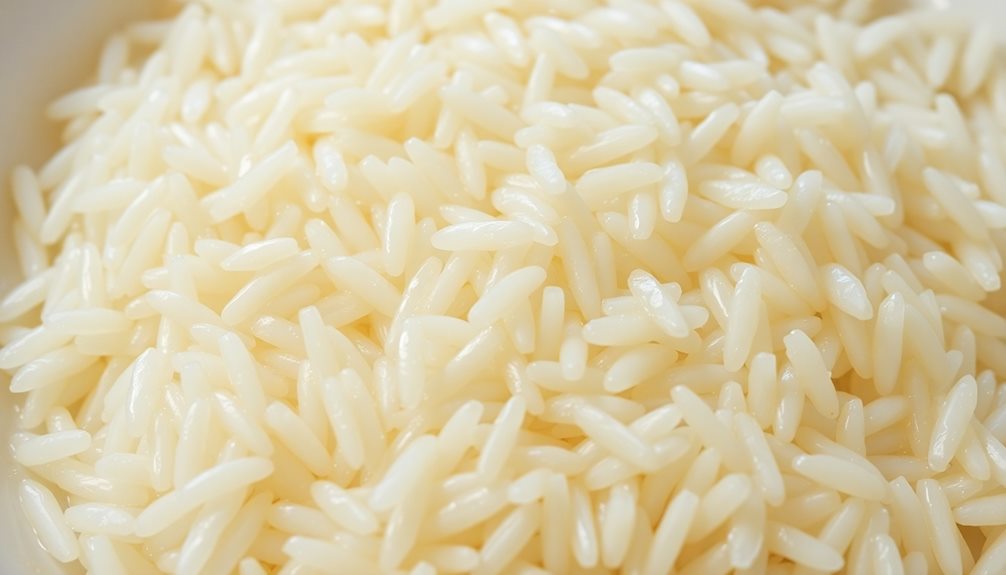
After the pandan leaves have simmered and infused the dish with their aromatic essence, it's time to strain and serve.
Carefully remove the pot from the heat and grab a fine-mesh strainer or cheesecloth. Gently pour the fragrant liquid through the strainer, separating the tender pandan leaves from the aromatic broth. This step ensures your dish will have a clean, pure flavor without any unwanted plant matter.
Now that you've strained the pandan-infused liquid, it's ready to be incorporated into your recipe.
Whether you're making a savory curry, a sweet dessert, or a refreshing beverage, the strained pandan broth will lend its distinctive floral notes and vibrant green hue.
Depending on your dish, you can either add the pandan broth directly or use it to cook other ingredients. Its versatility makes it a cherished ingredient in Southeast Asian cuisines.
Embrace the alluring aroma and enjoy the unique flavor that pandan leaves bring to your culinary creations!
Final Thoughts
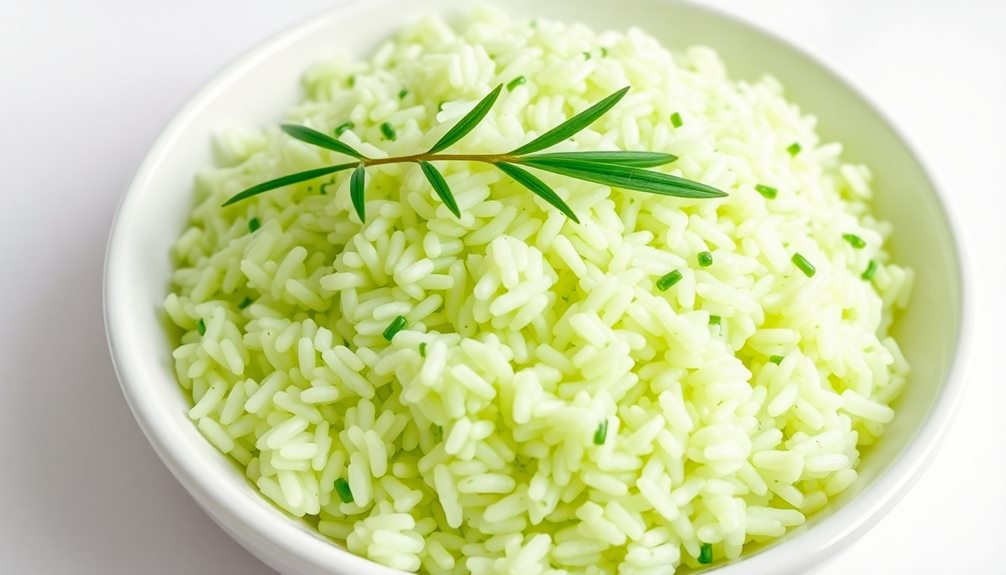
Embracing the fragrant pandan leaf as a versatile ingredient can elevate the depth and complexity of Southeast Asian cuisines. This unique leaf offers a distinctive aroma and flavor that can transform everyday dishes into something truly special.
Whether you're whipping up a fragrant coconut rice, infusing your curries with its essence, or baking delectable pandan-flavored treats, the pandan leaf is a culinary treasure worth exploring.
Beyond its delicious applications, the pandan leaf also holds cultural significance in many Southeast Asian regions. It's often used in ceremonial offerings and traditional rituals, showcasing its deep-rooted connection to the region's rich heritage.
As you venture into the world of pandan-infused cooking, you'll not only discover a new depth of flavor but also connect with the vibrant culinary traditions that have been passed down for generations.
Frequently Asked Questions
What Is the Nutritional Value of Pandan Leaves?
Pandan leaves are a good source of antioxidants, vitamins, and minerals. They contain vitamins A, C, and E, as well as magnesium, calcium, and iron. You can enjoy their nutritional benefits by using them in your Southeast Asian dishes.
Where Can I Purchase Fresh Pandan Leaves?
You can find fresh pandan leaves at Asian grocery stores, international markets, or specialty produce stands. Many Asian restaurants and caterers also sell pandan leaves for home cooks looking to use them in their cooking.
How Long Can Pandan Leaves Be Stored?
You can store fresh pandan leaves for up to 5 days in the refrigerator. For longer storage, you can freeze them for several months. Just be sure to wrap them tightly to prevent freezer burn.
Can Pandan Leaves Be Used in Non-Asian Recipes?
Yes, you can use pandan leaves in non-Asian recipes. They add a unique, subtle flavor that enhances a variety of dishes, from baked goods to sauces and marinades. Don't be afraid to experiment!
Are Pandan Leaves Available in All Regions?
Pandan leaves may not be available in all regions, as they're predominantly used in Southeast Asian cuisines. While you can find them in some specialty stores, their accessibility varies depending on your location.

